 Armor is one of the most important things to any warrior. Medieval knights had different kinds of armor to protect them from cold and throwing weapons. And metal plate armor is only one type among many others. So, what armor did medieval knights in Europe actually wear? What was it made from, and how effective it actually was? Let’s see four most popular types of body armor used in the Middle Ages. Just imagine – these are the prototypes of modern bulletproof vests, kevlar garments, and ballistic helmets.
Armor is one of the most important things to any warrior. Medieval knights had different kinds of armor to protect them from cold and throwing weapons. And metal plate armor is only one type among many others. So, what armor did medieval knights in Europe actually wear? What was it made from, and how effective it actually was? Let’s see four most popular types of body armor used in the Middle Ages. Just imagine – these are the prototypes of modern bulletproof vests, kevlar garments, and ballistic helmets.
#4 Light armor
In medieval Europe, warriors used under armor made from the fabric (body padding, gambeson, doublet, etc.), which were worn under the hauberk. These garments were padded or made from multiple layers of linen cloth or had a layer of horsehair and similar materials in between the layers of fabric. A good multilayered body padding was a pretty reliable protection from sward strikes and even arrows.
Poor infantrymen used such padded garments as the main armor. But their padded coats were rather thick and thorough, while those worn under the plate armor were thinner and more delicate. In some cases, body padding was reinforced by metal elements, like armrests, shoulder plates, and plate mittens.
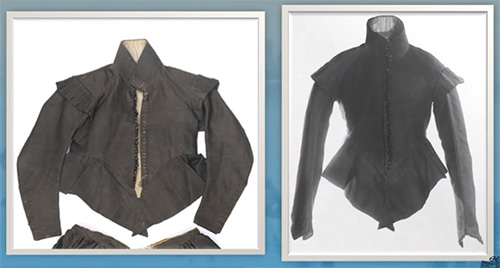
Cloth under armor doublet from the Metropolitan Museum of Art in New York. This wool English doublet was made between 1625-1635 and is trimmed with silk and lined with linen
Leather and cloth armor was a first step to the plate armor. The leather should have been as thick and coarse as possible. Even this leather had to be made much more solid – people boiled it in oil to add extra firmness. The leather armor was made by combining both boiled and rawhide leather. The weight of the leather armor can range from 2 kg / 4.4 lbs to 20-30 kg / 44-66 lbs. As leather armor was less reliable than metal armor, mostly it was turned into under armor or was used as only a part of the warrior’s dress.
#3 Chain mail
Many people think that the plate armor was the most popular and widespread in the Middle Ages, but actually, it was a hauberk that ruled the medieval world. European weapon historians consider that this type of body armor first appeared among the Celts.
By the early 12th century, the hauberk had long sleeves and covered the body almost completely. It protected the warrior’s body pretty well and weighed comparatively not so much – about 8 kg / 18 lbs. Also, it didn’t restrain movement.
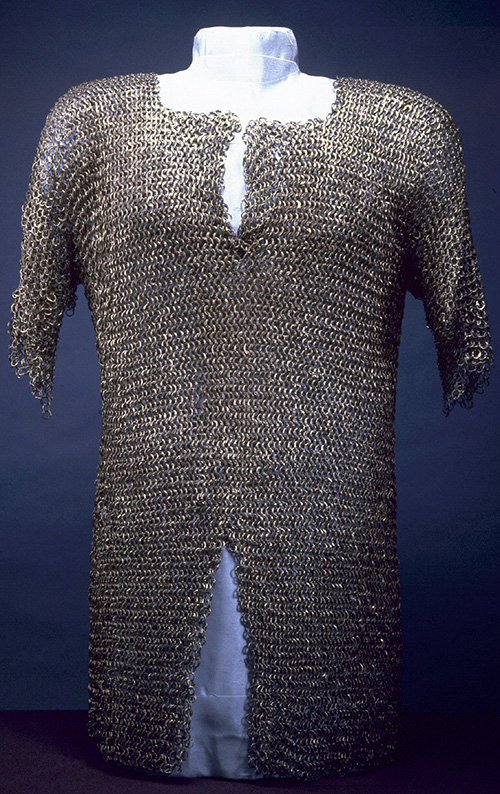
Italian late-15th-century hauberk. Photo from Wikipedia.org
Though, some historians don’t agree that the hauberk could give good enough protection. The thing is, you can bend only the softest and most flexible metal rod to make this garment. That’s why a hauberk could protect from saber strikes but wouldn’t do any good against a spear or heavy sword.
The links of a hauberk at the time were made from forged, flattened wire.
Until the early 17th century, a hauberk was the main armor of a European warrior. In the East, it was used until the 19th century.
#2 Small plate armor
These are the protective coverings made from metal plates. These garments were put over a leather or padded coat, sometimes over a hauberk. The plates usually were attached to a leather or fabric base so that the armor set was more comfy and flexible.
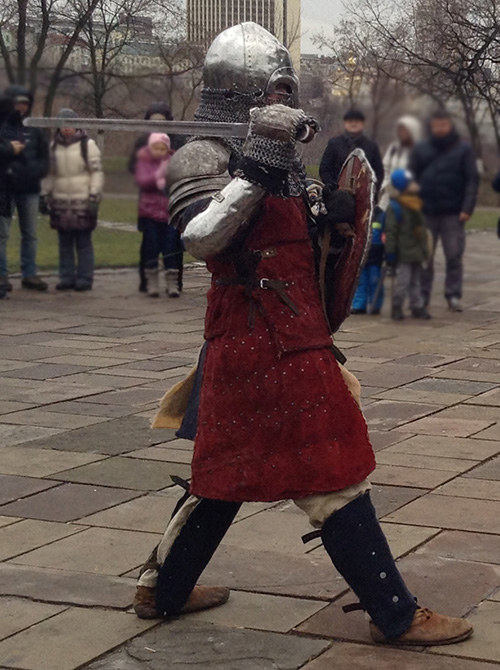
Modern replica of brigandine. You can also see a helmet and mittens that combine plate armor and chain mail
In Europe, the most widespread plate armor garments were a brigandine and a scale armor. The brigandine is a body armor made from oblong steel plates attached to a padded linen or wool canvas. The noble warrior’s brigandine often was covered with velvet or other expensive fabrics.
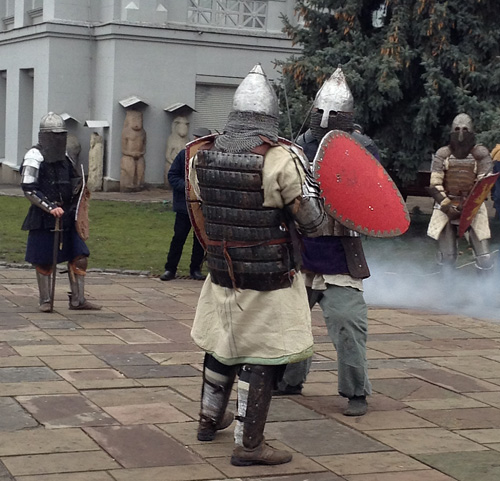
Modern replica of small plate armor
In the 14th century, the brigandine was worn mostly by infantrymen, while knights began to use armor made from large plates, for instance, a cuirass. The cuirass often had a small skirt made from metal plates, while there is no such thing in scale armor.
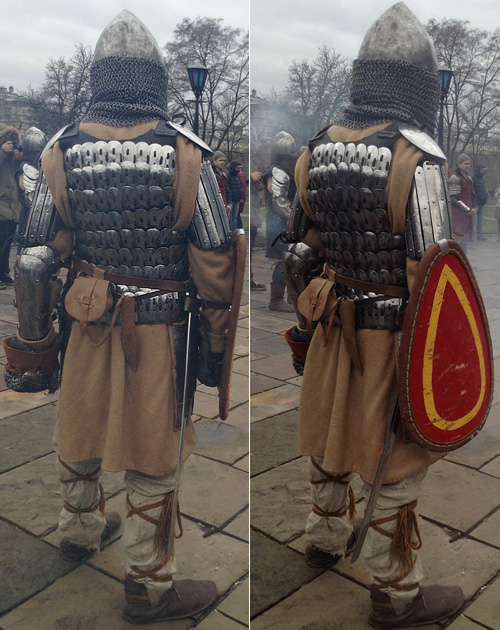
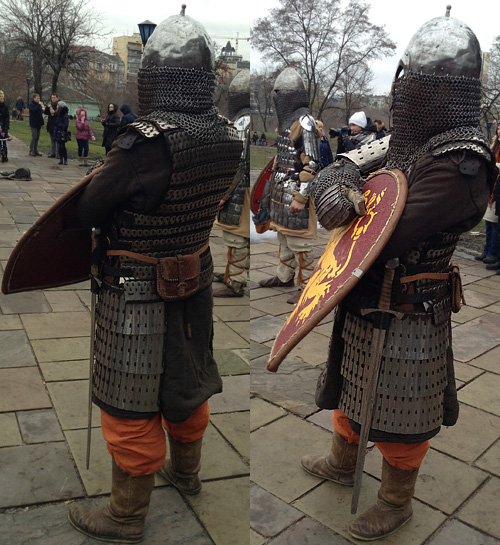
Modern replicas of small plate armor
If to talk about the scale armor, it definitely had some benefits. These pieces were easy to make because blacksmiths only had to produce small flat elements and attach them to one another. Also, these scales could be made from firm, solid metals, unlike the links of a hauberk. And another advantage of the scale armor is that each scale is extremely hard to break because of its size. So in the end, the scale armor was among the most reliable protective garments of the Middle Ages. One of the disadvantages of the scale armor was its weight.
#1 Large plate armor
These protective garments were very popular in Europe since the end of the 13th century. They were made from large metal plates. There was even a so-called “suit of armor” – full costume that covered pretty much the whole body of a knight, from head to toe. Also, there was a similar armor for the horse – it covered the body of the animal with the exception of legs and belly.
Large plate armor was considered the most reliable. It could weigh from 1 kg / 2.2 lbs to 30 kg / 66 lbs. Of course, such body armor was rather expensive. It could literally cost as a whole village.
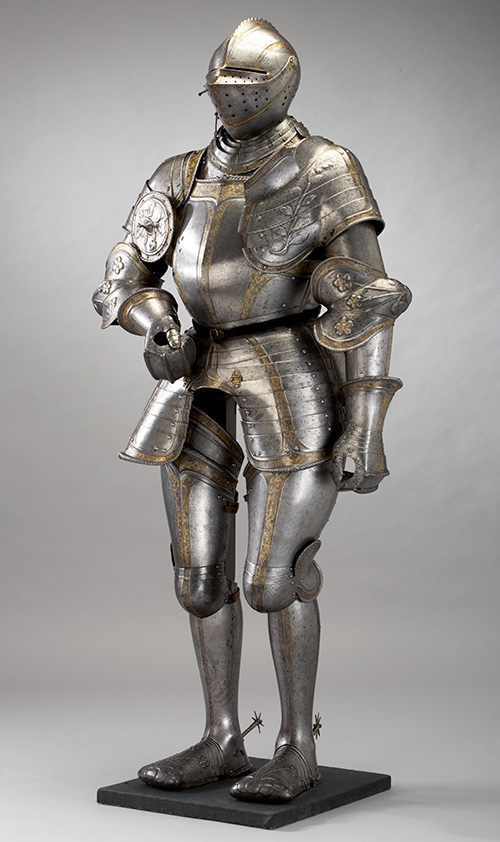
Plate armor of Gustav I of Sweden made by Kunz Lochner, circa 1540. Photo from Wikipedia.org
But it is not only the protective qualities that amaze us but also the beauty and opulence of the adornments. These pieces were often made individually for the warrior and were embellished with engravings, carvings, elements made from precious metals, etc. Large plate armor pieces often were real works of art, and plenty of them can be now seen in various museums around the world.


